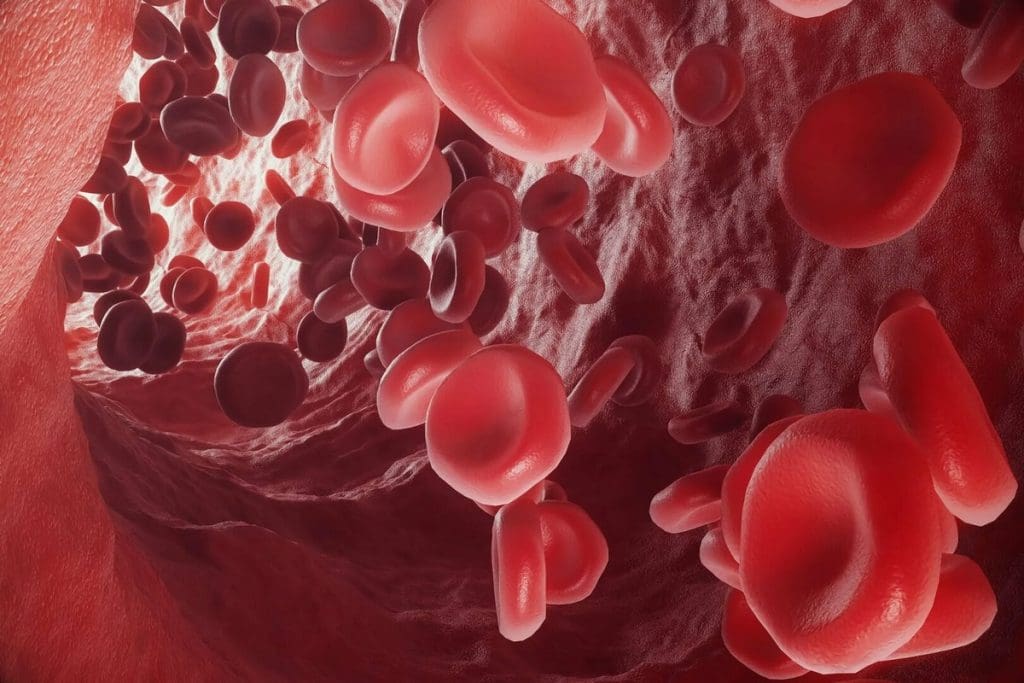Last Updated on November 14, 2025 by

Thrombocytopenia is a condition where you have a low platelet count. Platelets are important for blood clotting. Without enough, you might bleed easily. We’ll look at who is most likely to get this.
Some people are more likely to get thrombocytopenia. This includes older adults, people in the hospital, and those with advanced cancer or many health problems. The National Center for Biotechnology Information says many things can cause low platelet counts. These include viral infections, autoimmune disorders, and not getting enough nutrients.
Knowing who is at risk helps prevent and treat the condition better. In this article, we’ll talk about the main risk factors and what thrombocytopenia is.
Thrombocytopenia is a condition where you have too few platelets in your blood. It’s important to understand what it is and how doctors find it.
A normal platelet count is between 150,000 and 450,000 per microliter of blood. The expert says thrombocytopenia happens when you have less than 135,000 platelets per microliter in men. Women have less than 157,000 platelets per microliter.
Having too few platelets can make you bleed more easily. This is because your blood can’t clot properly. It can cause serious health problems, like bleeding that won’t stop.

To find thrombocytopenia, doctors often do a plt blood test. This is part of a complete blood count (CBC). They might also check you physically and ask about your health history to find the cause.
A 2024 study found that 22.6% of older hospital patients had thrombocytopenia. This shows how critical it is to diagnose and manage it, mainly in those at higher risk.
Older adults are more likely to get thrombocytopenia. This is because their bodies change with age. Their bone marrow makes fewer platelets as they get older.
As we age, our bone marrow makes fewer thrombocytes. This is due to several reasons. These include a decrease in bone marrow cells and changes in the stem cell area.
A 2024 study found that 22.6% of older hospital patients had thrombocytopenia. This shows we need to watch platelet counts more in older adults, mainly in hospitals.
There are specific risks for older adults with thrombocytopenia. These include:
Knowing these risks helps doctors prevent and manage thrombocytopenia in older adults.
Cancer patients, mainly those with advanced or metastatic disease, face a higher risk of thrombocytopenia. This condition, marked by a low count of thrombocytes or platelets, can greatly affect their treatment and health.
Research indicates that men with advanced or metastatic cancer are more likely to develop thrombocytopenia. The exact reasons are unclear, but it’s thought that both the cancer and treatments can harm platelet production.
Chemotherapy is a common cause of thrombocytopenia in cancer patients, with studies showing a 43% incidence rate. This happens because many chemotherapy drugs slow down bone marrow activity, reducing platelet production.
Radiation therapy, when aimed at bones or large body areas, can also affect platelet production. The bone marrow, which makes platelets, can get damaged by radiation, causing thrombocytopenia.
Regular monitoring of platelet counts is key for oncology patients. This involves frequent blood tests to check platelet levels and adjusting treatment plans as needed to manage thrombocytopenia risk.
By understanding these risks and using proper monitoring, healthcare providers can manage thrombocytopenia in cancer patients better. This ensures they get the best care possible.
Hospitalized patients face a higher risk of thrombocytopenia. This is due to infections and certain medications. These factors can greatly affect platelet counts.
Infections like sepsis and bloodstream infections can cause thrombocytopenia. These infections trigger an immune response. This response can harm platelet production and increase consumption.
Some hospital medications, like heparin and antibiotics, can lower platelet counts. It’s important to watch patients on these drugs closely. This helps prevent and manage low platelet counts.
When patients are admitted, it’s key to check for thrombocytopenia risk factors. We look at their medical history, current infections, and medications. These can affect platelet counts.
Preventing thrombocytopenia in hospitals needs teamwork. Healthcare teams work together to watch platelet counts, handle infections fast, and adjust medications. Understanding and preventing low platelet counts improves patient outcomes.
To increase platelet count, we must tackle the root causes. This means adjusting treatments and supporting patients at risk.
Comorbidities like liver disease and autoimmune disorders can make it harder to assess thrombocytopenia risk. Thrombocytopenia, or low platelet counts, can get worse because of these health issues. They can affect how platelets are made or how they work.
Liver disease can really mess with platelet production and function. The liver is key in making thrombopoietin, a hormone needed for platelets. When the liver doesn’t work right, it can’t make enough thrombopoietin, leading to low platelets.
Also, liver problems can cause platelets to get stuck in the spleen. This makes the platelet count even lower.
Autoimmune disorders can also mess with platelet production. In these conditions, the immune system attacks its own cells. This can lead to a condition called immune thrombocytopenia (ITP).
In ITP, the immune system makes antibodies that mark platelets for destruction. This can cause a big drop in platelet counts.
ITP happens when the immune system attacks platelets. People with ITP might have a history of bleeding, very low platelet counts, or other autoimmune disorders. To manage ITP, doctors use medicines that help stop the immune system from destroying platelets.
Having more than one health problem can increase the risk of thrombocytopenia. For example, someone with liver disease and an autoimmune disorder might be at even higher risk. This is because both conditions can affect platelet production and survival.
It’s important for doctors to understand how these conditions can affect thrombocytopenia risk. This helps them come up with better ways to monitor and manage low platelet counts.
Thrombocytopenia is a big risk for many, like older adults, cancer patients, and those with other health issues. Finding it early and treating it right can make a big difference. At Liv Hospital, we focus on always improving to keep those at risk safe.
We’re dedicated to top-notch healthcare and support for patients from around the world. A team effort is key to watching over high-risk patients and finding ways to protect them. This way, we can lower the chance of serious problems and help patients get better.
Understanding and managing thrombocytopenia risk is vital for many patients. Our team works together to give each patient the care they need. We aim to make sure they get the best care possible.
Thrombocytopenia is when you have too few platelets in your blood. Platelets help your blood clot. Having too few can make you bleed more easily.
A normal platelet count is between 150,000 and 450,000 per microliter of blood. If it’s below 150,000, it might mean you have thrombocytopenia.
Signs of thrombocytopenia include easy bruising and small red or purple spots on the skin. You might also get nosebleeds or have trouble stopping bleeding from cuts.
Doctors use a blood test called a platelet count to find out if you have thrombocytopenia. This test checks how many platelets you have in your blood.
Older age, cancer, and chemotherapy can increase your risk. So can certain medications, liver disease, and immune disorders like ITP.
Yes, it can. Treatment depends on why you have it. It might include medicines to help your body make more platelets or stopping certain medications.
To prevent it, manage any health issues you have. Avoid certain medicines and try to avoid getting sick in the hospital.
The ICD-10 code for thrombocytopenia is D69.6. This code means you have thrombocytopenia without specifying why.
Chemotherapy can lower your platelet count. It does this by stopping your bone marrow from making enough platelets.
Liver disease can cause thrombocytopenia. This is because your spleen might trap more platelets, and your body makes less of a hormone that helps make platelets.
Subscribe to our e-newsletter to stay informed about the latest innovations in the world of health and exclusive offers!